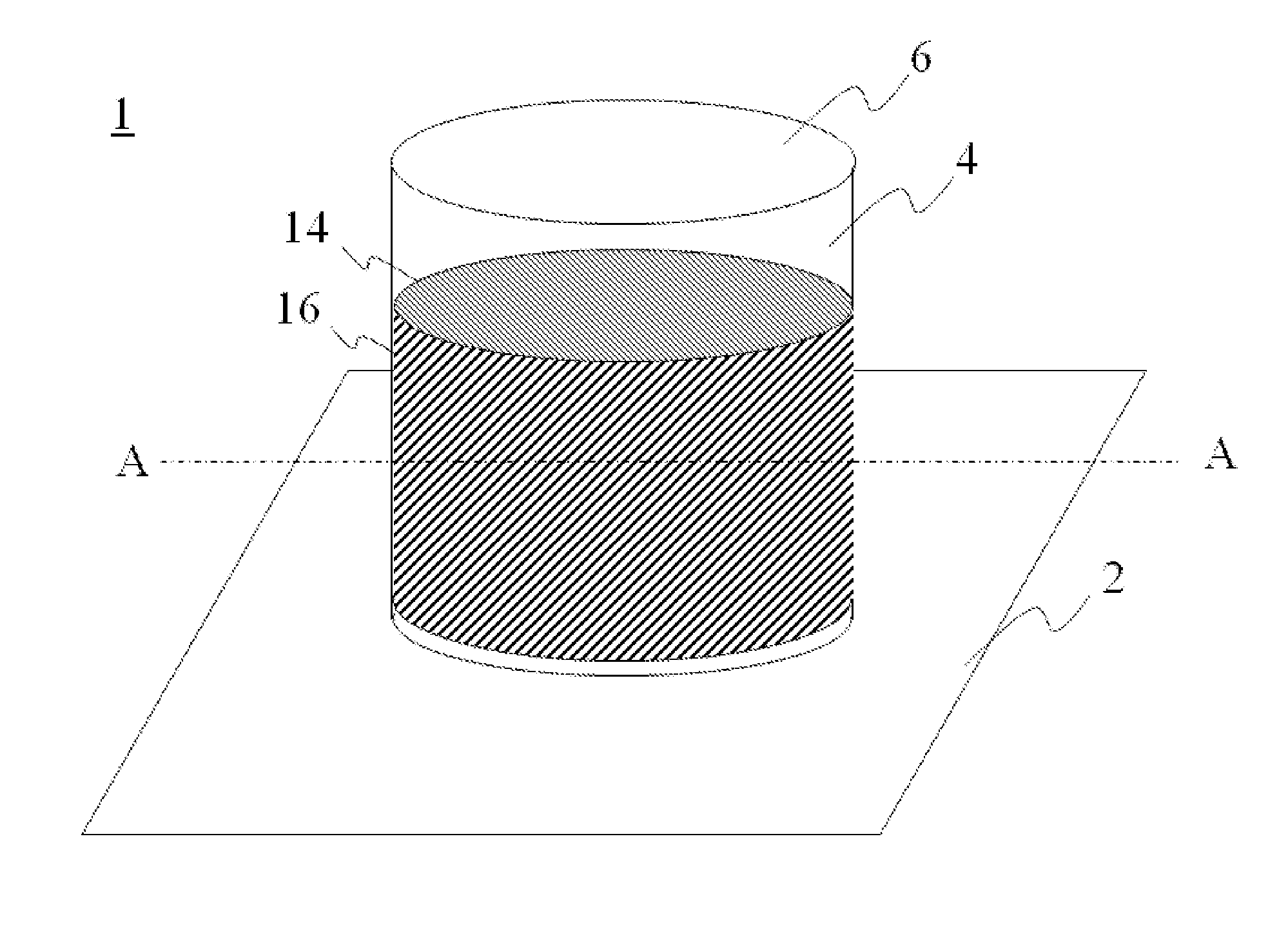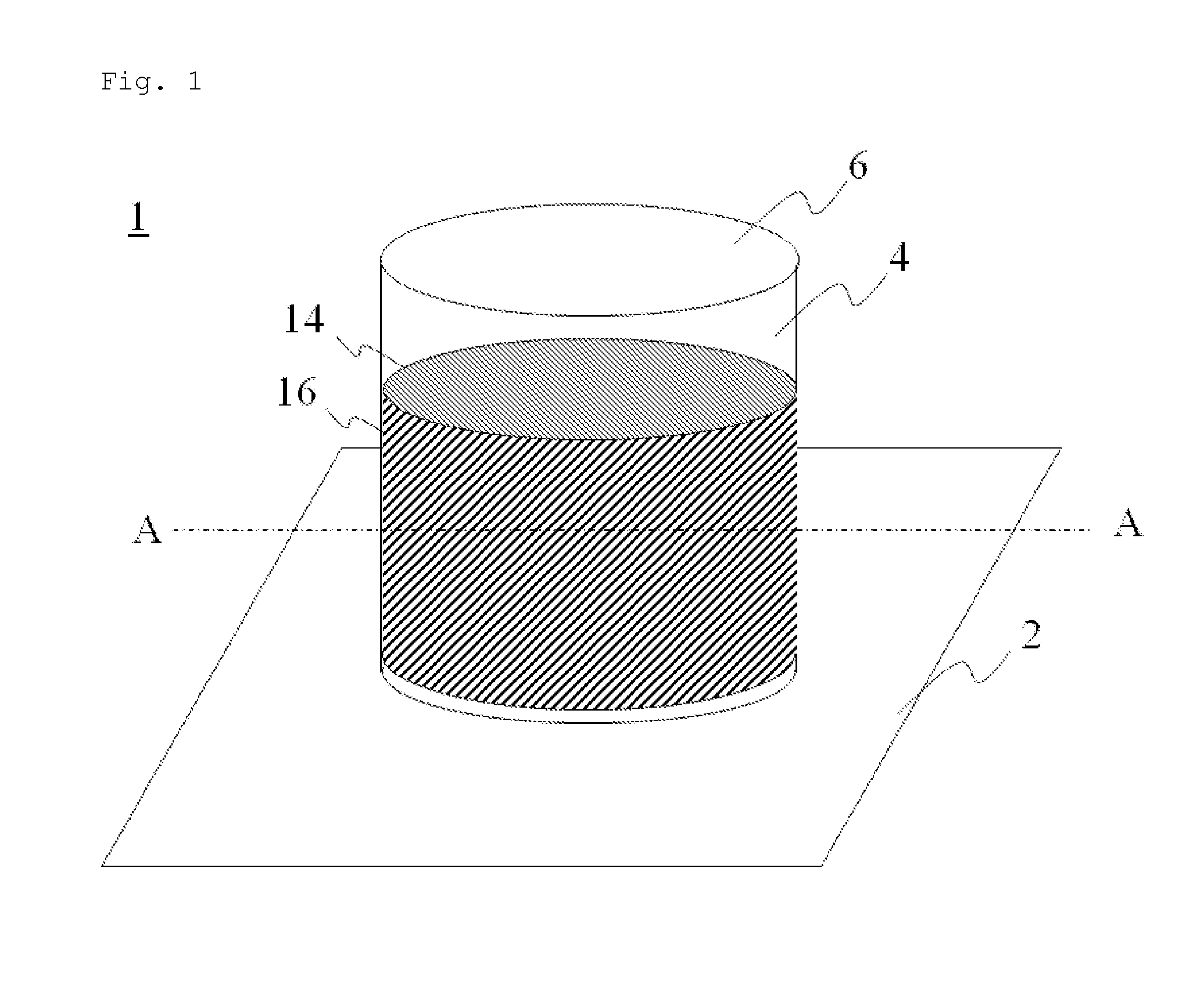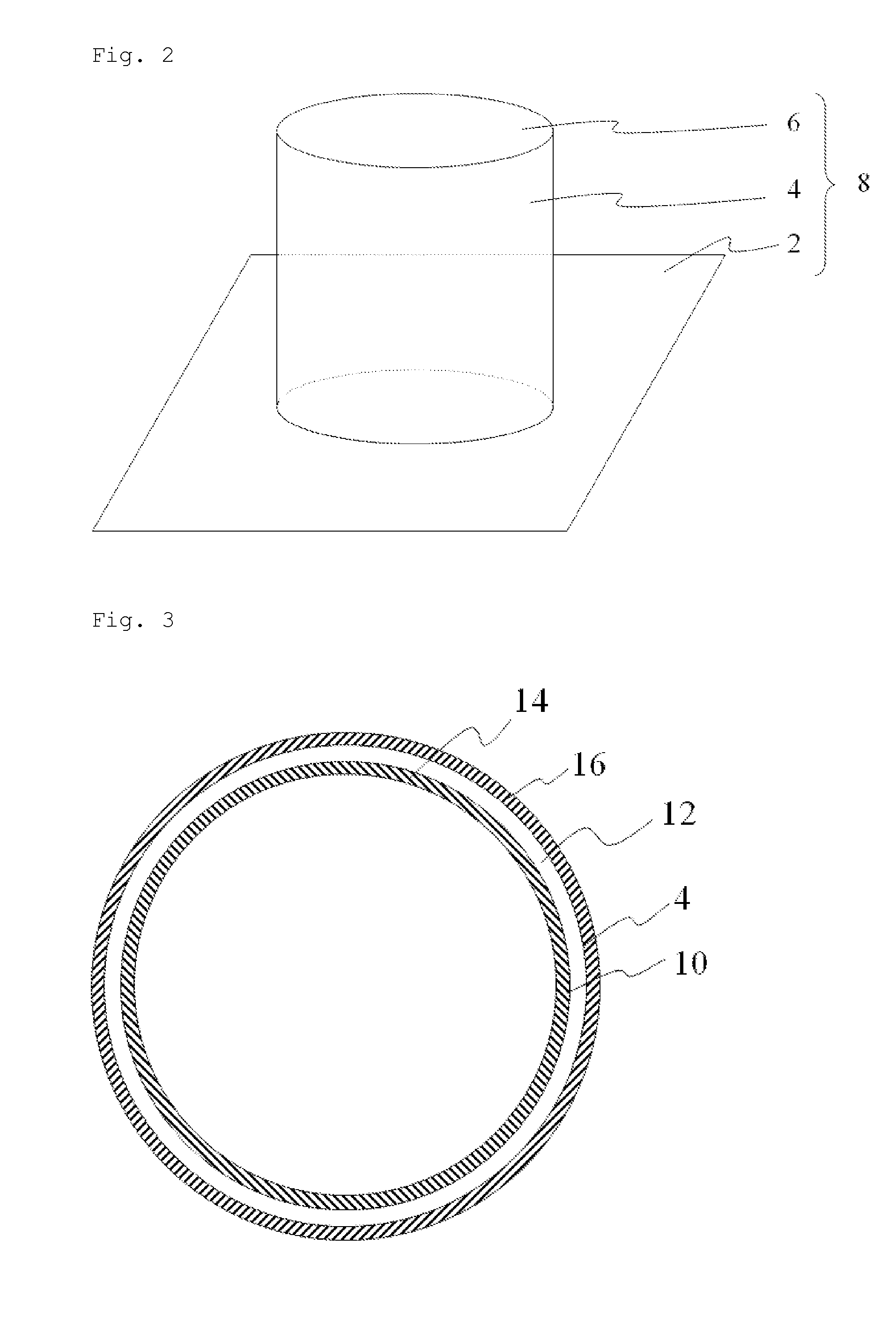Method for molding piezoelectric polymer and molded body
a piezoelectric polymer and polymer technology, applied in the direction of generator/motor, mechanical vibration separation, instruments, etc., can solve the problems of not providing a favorable piezoelectric property, limiting the application of the method, and unable to achieve the desired piezoelectric properties, etc., to achieve flat sound pressure-frequency characteristics and high sound pressure
- Summary
- Abstract
- Description
- Claims
- Application Information
AI Technical Summary
Benefits of technology
Problems solved by technology
Method used
Image
Examples
example 1
[0116]A polylactic acid film (in a sheet shape with a molecular weight of 100,000 and a thickness of 1 mm manufactured by Taki Chemical Co., Ltd.) was set in a vacuum molding machine. A metal mold having a radius of 5 cm and a depth of 12 cm was used. The film was heated to 99.3° C. and vacuum-molded while the film is pushed in from the upper surface thereof toward the metal mold by a plug with a pressure of about 2 tons. An obtained molded body was taken out from the vacuum molding machine, was fixed to a jig corresponding to the shape of the molded body, was heat-treated in a heating furnace at about 110° C. for 5 minutes, and was subsequently rapidly cooled in a water tank filled with water to obtain a molded body corresponding to FIG. 2 having a radius of 5 cm and a height of 12 cm as dimensions of a cylindrical portion.
example 2
[0117]A molded body was obtained in the same way as Example 1 except that the polylactic film used in Example 1 was changed to a polylactic acid film with a molecular weight of 60,000 and a thickness of 0.5 mm (manufactured by Taki Chemical Co., Ltd).
experimental example 1
[0119]Samples with a length of 120 mm and a width of 5 mm were cut out from the cylindrical portions of the molded bodies of Examples 1 and 2, and Comparative Example 1. The piezoelectric modulus and the retardation were measured in upper, middle and lower portions obtained by horizontally equally dividing each of the samples into three pieces (the upper side of FIG. 2 corresponds to the upper portion). The results are described in Table 1.
TABLE 1piezoelectricretardationmodulus (pC / N)(nm)Example 1upper portion3.852202.2middle portion5.252542.6lower portion4.752347.8Example 2upper portion3.451000.2middle portion5.051892.6lower portion4.551267.8Comparativeupper portion0.0840.2Example 1middle portion0.0550.6lower portion0.0970.8
[0120]As shown in Table 1, it is confirmed that a molded body with high piezoelectric modulus and retardation can be obtained by using the method for molding of the present invention.
PUM
| Property | Measurement | Unit |
|---|---|---|
| Temperature | aaaaa | aaaaa |
| Temperature | aaaaa | aaaaa |
| Pressure | aaaaa | aaaaa |
Abstract
Description
Claims
Application Information
 Login to View More
Login to View More - R&D
- Intellectual Property
- Life Sciences
- Materials
- Tech Scout
- Unparalleled Data Quality
- Higher Quality Content
- 60% Fewer Hallucinations
Browse by: Latest US Patents, China's latest patents, Technical Efficacy Thesaurus, Application Domain, Technology Topic, Popular Technical Reports.
© 2025 PatSnap. All rights reserved.Legal|Privacy policy|Modern Slavery Act Transparency Statement|Sitemap|About US| Contact US: help@patsnap.com



